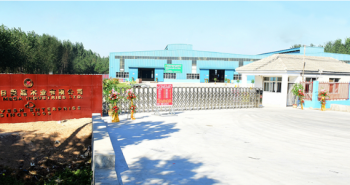A veneered panel is not only unique, it’s natural too.
Veneered panels consist of a support panel with two natural or reconstructed veneer faces. It’s real wood carefully selected by specialists on the basis of the best craftsman’s practices.
How to Design a Veneered Panel to Meet the Customer’s Requirements
THE DESIGN PHASES
Choosing the wood
Deciding which slicing technique to use for the veneer
Deciding which jointing technique to use for the veneer
Choosing the quality of the front and rear veneers
Choosing the support on which to bond the veneer
Choosing the surface treatment and finish (optional)
Wood Types
Ziricote
Ziricote
White Oak (American White Oak)
White Oak (American White Oak)
Wenge
Wenge
Yellow Pine
Yellow Pine
Zebrawood
Zebrawood
Olive
Olive
Green Tulipwood
Green Tulipwood
White Tulipwood
White Tulipwood
Teak
Teak
Oak (Saw cut effect)
Oak (Saw cut effect)
Flamed-Grain Tanganyika
Flamed-Grain Tanganyika
Tanganyika Frise
Tanganyika Frise
Stripped-Grain Tangayika
Stripped-Grain Tangayika
Knotty Oak
Knotty Oak
Dark Knotty Oak
Dark Knotty Oak
Oak
Oak
Red Oak (American Red Oak)
Red Oak (American Red Oak)
Red Gum
Red Gum
Scots Pine
Scots Pine
Knotty Pine
Knotty Pine
Santos Rosewood
Santos Rosewood
Padouk
Padouk
Okoumé
Okoumé
Honduran Mahogany
Honduran Mahogany
European Walnut
European Walnut
Hickory
Hickory
Sapele Mahogany
Sapele Mahogany
Larch
Larch
Olive Ash
Olive Ash
Kaya
Kaya
Iroko
Iroko
Ash
Ash
Ebony
Ebony
Semi-evaporated Beech Woo
Semi-evaporated Beech Woo
Eucalyptus
Eucalyptus
Black Cherry
Black Cherry
Douglas Fir
Douglas Fir
Lemon Scented Monterey Cypress
Lemon Scented Monterey Cypress
Chestnut
Chestnut
Lebanon Cedar
Lebanon Cedar
Rotary Cut Birch
Rotary Cut Birch
European Maple
European Maple
Spruce
Spruce
Silver Fir
Silver Fir
Load More
Thickness
The standard veneer thickness is 0.6 mm.
Reconstructed Veneer
Several thin rotary cut sheets of colored wood are bonded together into a block, which is then slice cut into veneer. The wood layers simulate the structure of the tree trunk, recreating the grain and the “mottled” effect of natural veneer, while guaranteeing the complete uniformity of different production batches.
Forest Trees
Types of Veneer
Bespoke
A type of veneer made of only the finest woods, one-of-a-kind, where every feature is a distinctive mark. Customers can use our dedicated, bespoke consulting service to select unique woods for the most original designs, letting the tree tell its story.
Design
These veneers are obtained from uniform logs of the highest quality. The veneers are arranged in regular sequences to produce a striking visual and aesthetic effect. The panels are also numbered to be used in a sequence, so there is a uniform and continuous progression in the design from one panel to the next.
Features:
Regular, well-defined grain
Uniform color, free of variations and anomalies
Small, almost invisible natural variations are tolerated as these are typically found in these specific woods
Decorative veneer
Classic
Standard version, suitable for most circumstances and applications. Some natural features of the wood can be seen on the veneer, without having a negative effect on the final aesthetic result. This quality is characterized by the regular sequence of the veneers, although to a lesser extent than with the Design veneers.
Features:
Less marked grain
Slight color variations
With fewer smaller knots, the natural look of the product is guaranteed
Wide range of applications
Commercial
This veneer quality is used for panels characterized by the natural, irregular grain, typically found in wood. These panels are very low cost.
Features:
Natural, irregular grain
Decoloration and mineral veining also available
Evident knots are tolerated as long as they are healthy
Suitable for low-cost applications
Rear/Counterbalancing
In all applications that don’t require any special characteristic aesthetic finish for the second veneer face, we can counterbalance the panel by applying sliced cut veneers or rotary cut veneers of a variable quality to the rear of the panel, not defined by any standard.

